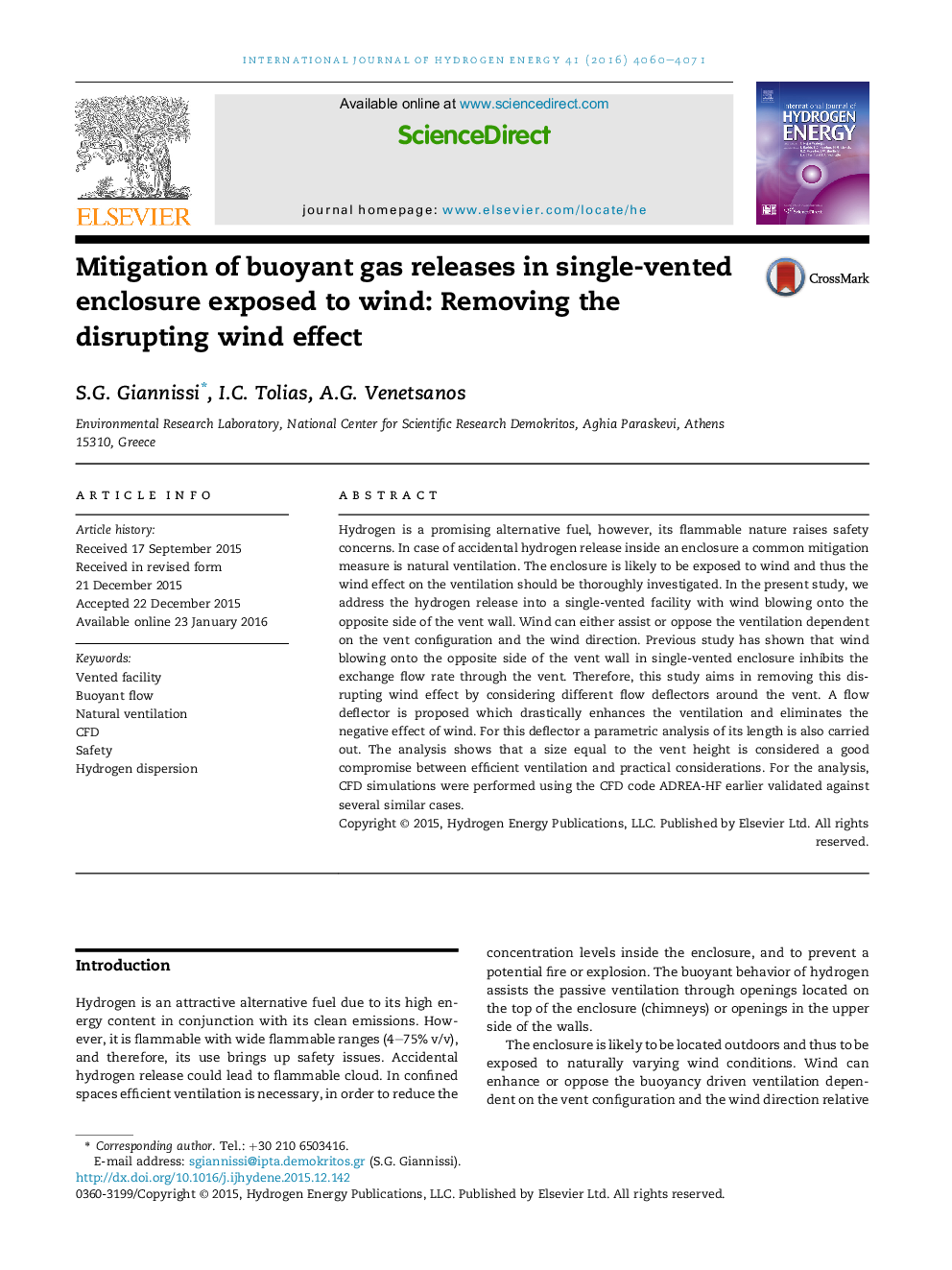| کد مقاله | کد نشریه | سال انتشار | مقاله انگلیسی | نسخه تمام متن |
|---|---|---|---|---|
| 1277935 | 1497419 | 2016 | 12 صفحه PDF | دانلود رایگان |
• We study H2 distribution inside a single-vented facility exposed to wind using CFD.
• Wind blowing onto the opposite side of the vent wall disrupts the ventilation.
• Several flow deflectors were tested to eliminate the disrupting wind effect.
• A horizontal deflector in the middle of the vent provides efficient ventilation.
• A deflector equal to the vent height is sufficient according to parametric analysis.
Hydrogen is a promising alternative fuel, however, its flammable nature raises safety concerns. In case of accidental hydrogen release inside an enclosure a common mitigation measure is natural ventilation. The enclosure is likely to be exposed to wind and thus the wind effect on the ventilation should be thoroughly investigated. In the present study, we address the hydrogen release into a single-vented facility with wind blowing onto the opposite side of the vent wall. Wind can either assist or oppose the ventilation dependent on the vent configuration and the wind direction. Previous study has shown that wind blowing onto the opposite side of the vent wall in single-vented enclosure inhibits the exchange flow rate through the vent. Therefore, this study aims in removing this disrupting wind effect by considering different flow deflectors around the vent. A flow deflector is proposed which drastically enhances the ventilation and eliminates the negative effect of wind. For this deflector a parametric analysis of its length is also carried out. The analysis shows that a size equal to the vent height is considered a good compromise between efficient ventilation and practical considerations. For the analysis, CFD simulations were performed using the CFD code ADREA-HF earlier validated against several similar cases.
Journal: International Journal of Hydrogen Energy - Volume 41, Issue 6, 19 February 2016, Pages 4060–4071
